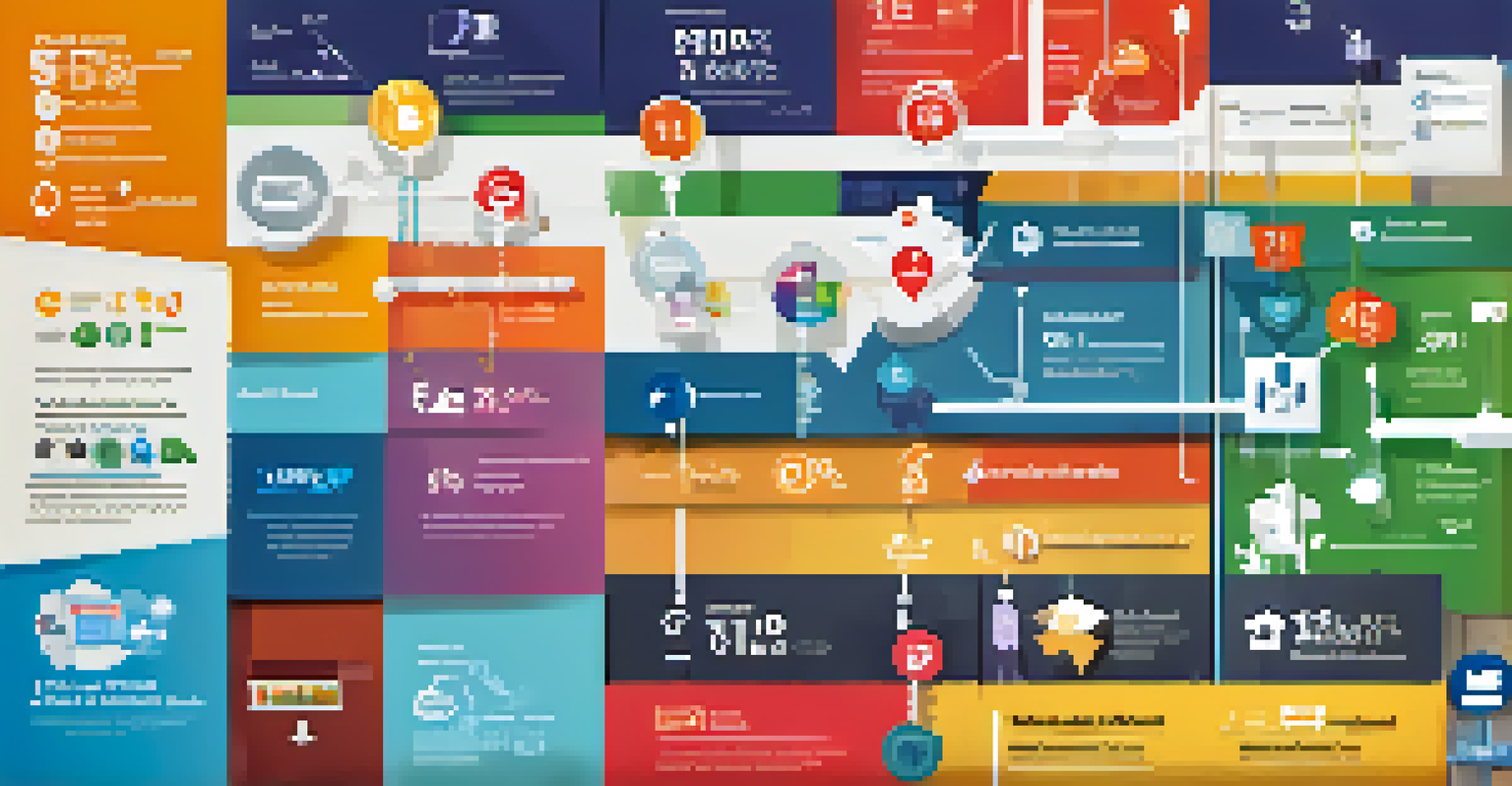Key Metrics to Track in Social Media Analytics Campaigns

Understanding Engagement Rate and Its Importance
Engagement rate is a crucial metric that measures how your audience interacts with your content. It includes likes, comments, shares, and any other form of interaction. By tracking this metric, you can gauge the effectiveness of your posts and understand what resonates with your audience.
What gets measured gets managed.
For instance, if a post receives a high engagement rate, it indicates that your audience finds it valuable. This insight can guide your content strategy, helping you create more of what your followers love. Conversely, low engagement rates might signal a need for change in your approach.
Ultimately, engagement rate acts as a barometer for your social media health, allowing you to refine your content and foster stronger connections with your audience.
Tracking Follower Growth to Measure Success
Follower growth is a straightforward yet powerful metric that shows how your audience is expanding over time. By monitoring this growth, you can assess the effectiveness of your marketing efforts and campaigns. A steady increase in followers often indicates that your brand is gaining traction and attracting interest.

For example, if you launch a new campaign and see a spike in followers, it’s a clear sign that your efforts are paying off. However, it’s equally important to analyze any dips in growth, as they can reveal weaknesses in your strategy. Understanding these trends can help you pivot effectively.
Engagement Rate Indicates Value
High engagement rates signal valuable content, guiding your content strategy to resonate better with your audience.
In summary, tracking follower growth not only measures your reach but also informs your overall marketing strategy.
The Power of Reach and Impressions Insights
Reach and impressions are key metrics that help you understand how many people see your content. Reach refers to the number of unique users who view your post, while impressions count the total views, including multiple views by the same user. Monitoring these metrics allows you to evaluate the visibility of your content.
In a world where everything is connected, understanding your audience is the key to unlocking success.
For instance, if your reach is high but impressions are low, it might mean your content is not compelling enough to encourage repeat views. On the other hand, high impressions with low reach could suggest that your content is being shared widely among a smaller audience. This insight can guide your content creation efforts.
By analyzing reach and impressions together, you can better understand your audience's behavior and optimize your content for maximum impact.
Analyzing Click-Through Rate for Content Effectiveness
Click-Through Rate (CTR) measures how often people click on your links compared to how many times they see your post. Calculating your CTR helps you understand how effectively your content drives traffic to your website or landing pages. A higher CTR indicates your audience finds your content compelling enough to take action.
For example, if you share a blog post and notice a low CTR, it might suggest that your headline or call-to-action needs improvement. Experimenting with different formats or messaging can lead to better results. Tracking CTR over time also allows you to identify trends and adjust your strategies accordingly.
Conversion Rate Reflects Success
A high conversion rate shows your social media efforts are effectively driving desired actions like purchases or sign-ups.
Ultimately, monitoring your CTR is essential for refining your content and maximizing your online reach.
Conversion Rate: The Final Measure of Success
Conversion rate is a pivotal metric that tells you how many actions were taken as a result of your social media efforts, such as purchases or sign-ups. This metric connects your social media campaigns directly to your business goals. A higher conversion rate means your strategies are effectively driving desired actions.
For example, if you run a promotional campaign on social media and see a significant rise in conversions, it validates your approach. Conversely, low conversion rates could indicate that your messaging or targeting needs adjustment. It's crucial to analyze the entire customer journey to pinpoint where improvements can be made.
In essence, conversion rate is the ultimate indicator of how well your social media efforts are translating into real-world results.
Sentiment Analysis: Measuring Audience Feelings
Sentiment analysis involves evaluating how your audience feels about your brand based on their comments, shares, and reactions. Understanding sentiment is essential for managing your brand's reputation and building a loyal community. Positive sentiment can enhance your brand image, while negative sentiment can highlight areas for improvement.
For instance, if a post receives overwhelmingly positive feedback, it suggests that your audience is resonating with your message. Conversely, negative comments can provide valuable insights into what might not be working. By actively monitoring sentiment, you can tailor your content to foster a more positive community experience.
Sentiment Analysis Shapes Reputation
Monitoring audience sentiment helps manage your brand's reputation and tailor content to foster a positive community.
Overall, sentiment analysis helps you gauge audience perception, allowing you to adjust your strategies and enhance your brand’s reputation.
Referral Traffic: Connecting Social Media to Your Website
Referral traffic measures how many visitors come to your website from social media platforms. This metric is significant because it shows the effectiveness of your social media strategy in driving potential customers to your site. By analyzing referral traffic, you can assess which platforms and content types are most effective in generating interest.
For example, if a specific type of post consistently drives high referral traffic, it’s a signal to create more of that content. Conversely, low referral traffic might indicate that your social media efforts aren't aligning with your audience's interests. Understanding these dynamics can help you craft a more effective social media strategy.

In summary, monitoring referral traffic is essential for understanding the impact of your social media presence on your overall web traffic.
Conclusion: Using Metrics to Drive Social Media Success
In conclusion, tracking key metrics in social media analytics is essential for optimizing your campaigns and achieving your business goals. By focusing on engagement rates, follower growth, reach, CTR, conversion rates, sentiment analysis, and referral traffic, you can gather comprehensive insights into your performance. These metrics work together to paint a holistic picture of your social media effectiveness.
As you analyze these metrics, remember that the ultimate goal is to connect with your audience and drive meaningful interactions. Regularly reviewing and adjusting your strategies based on these insights can lead to sustained success in your social media endeavors. It's a continuous journey of learning and adapting.
So, dive into your analytics, embrace the numbers, and let them guide you towards a more impactful and engaging social media presence.